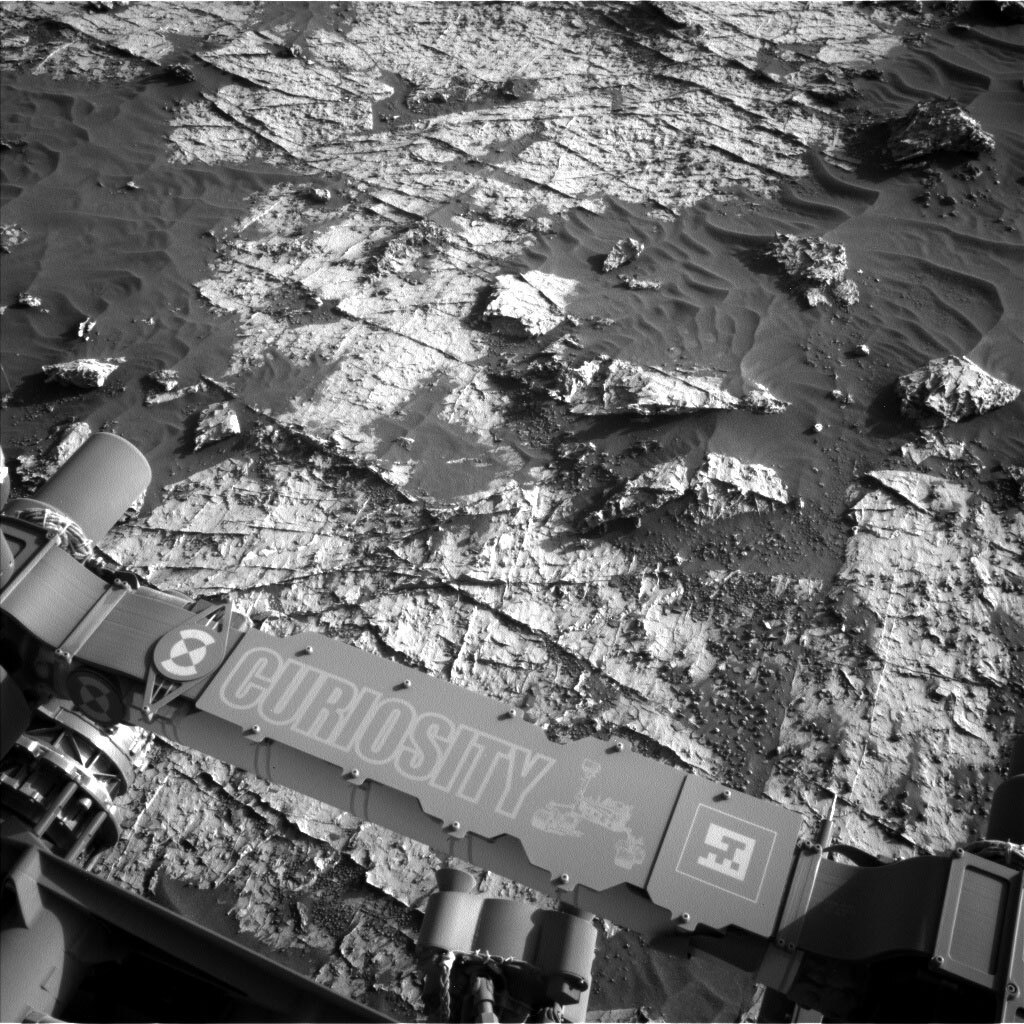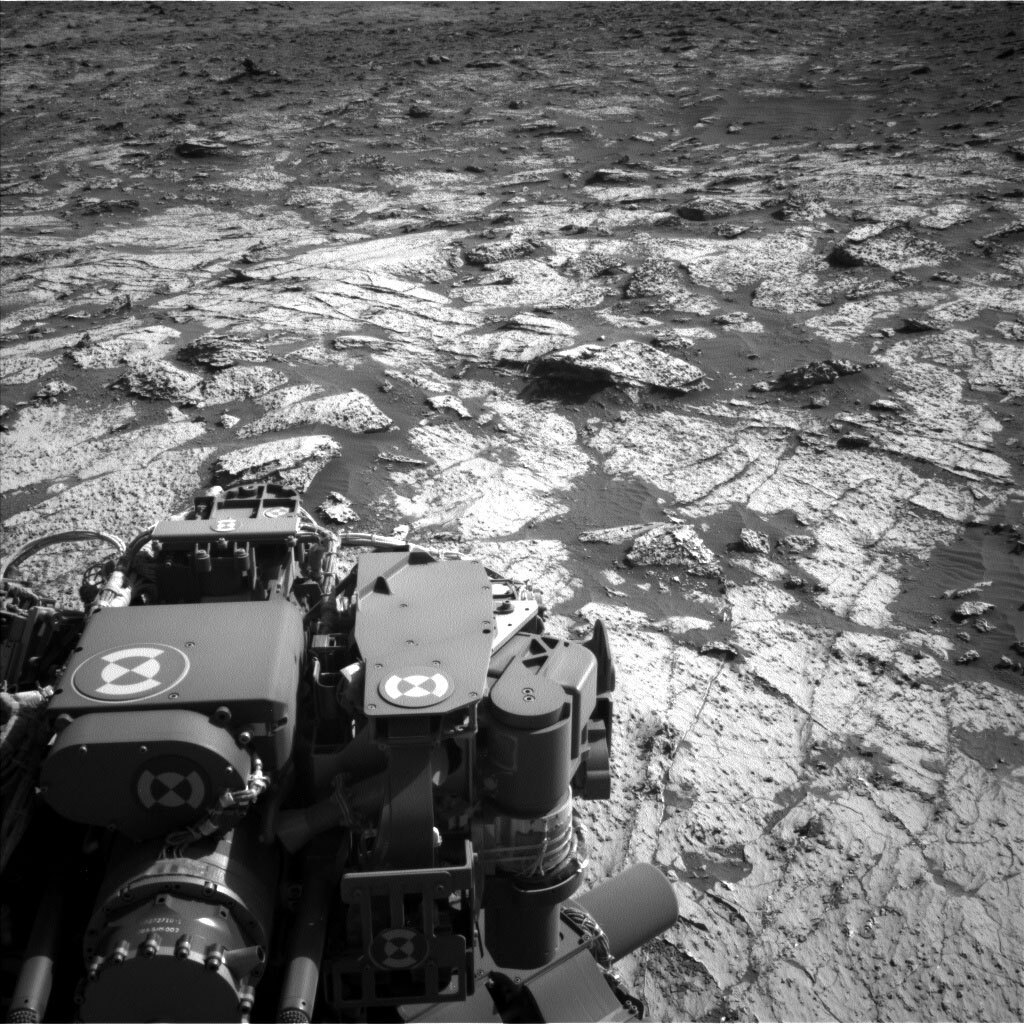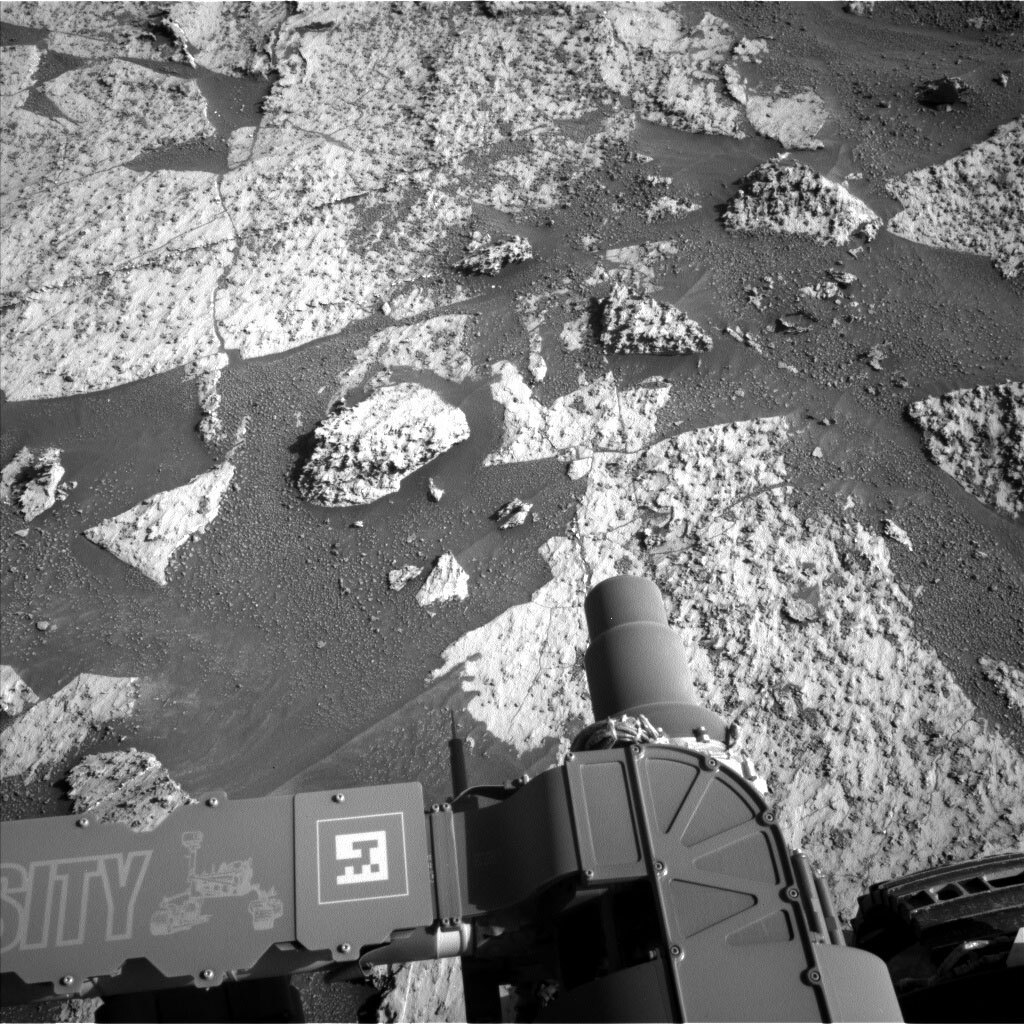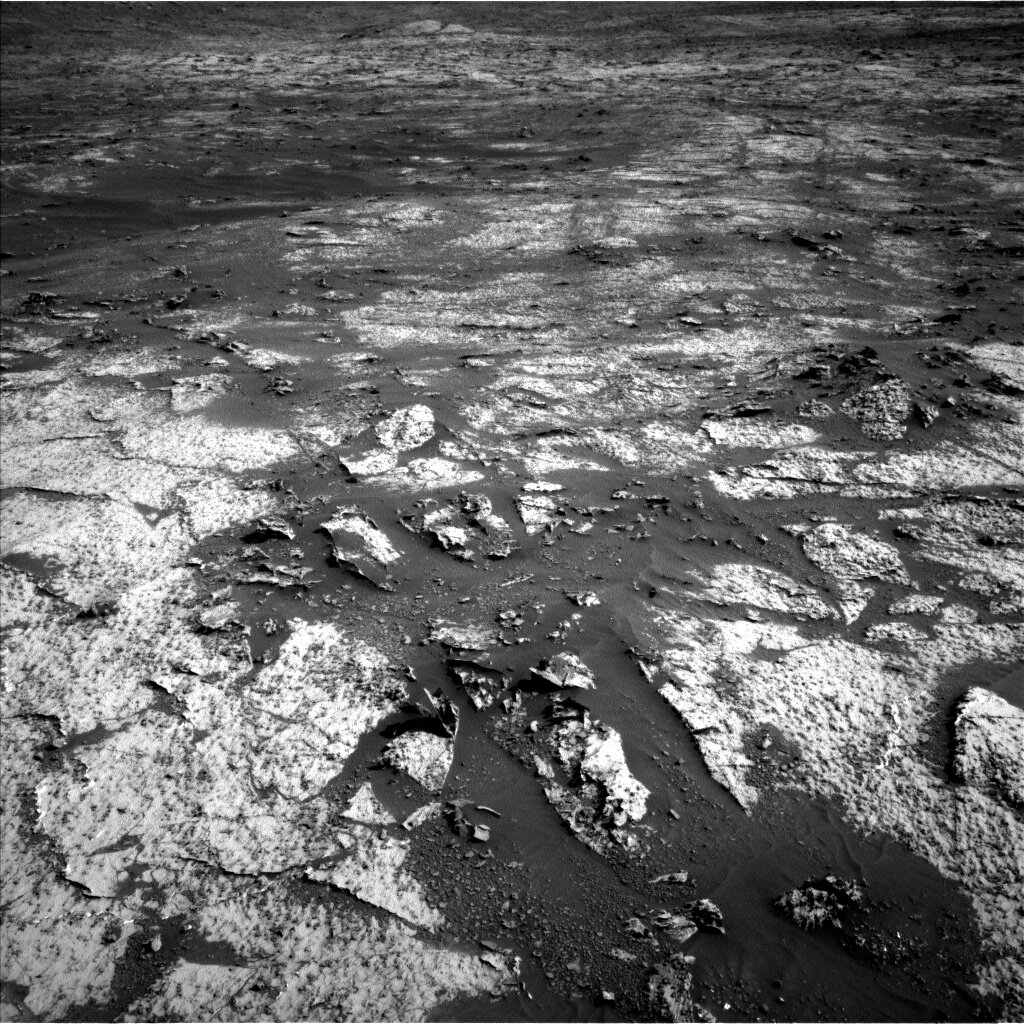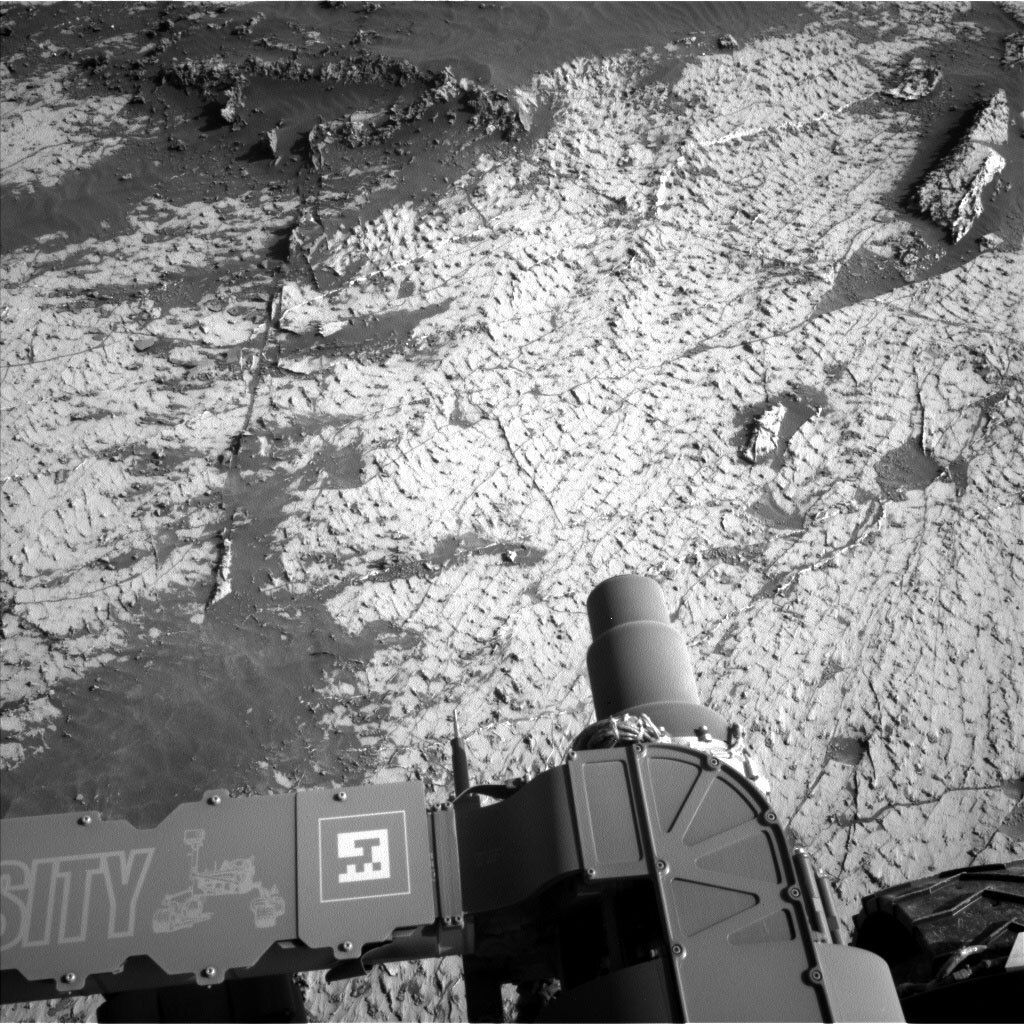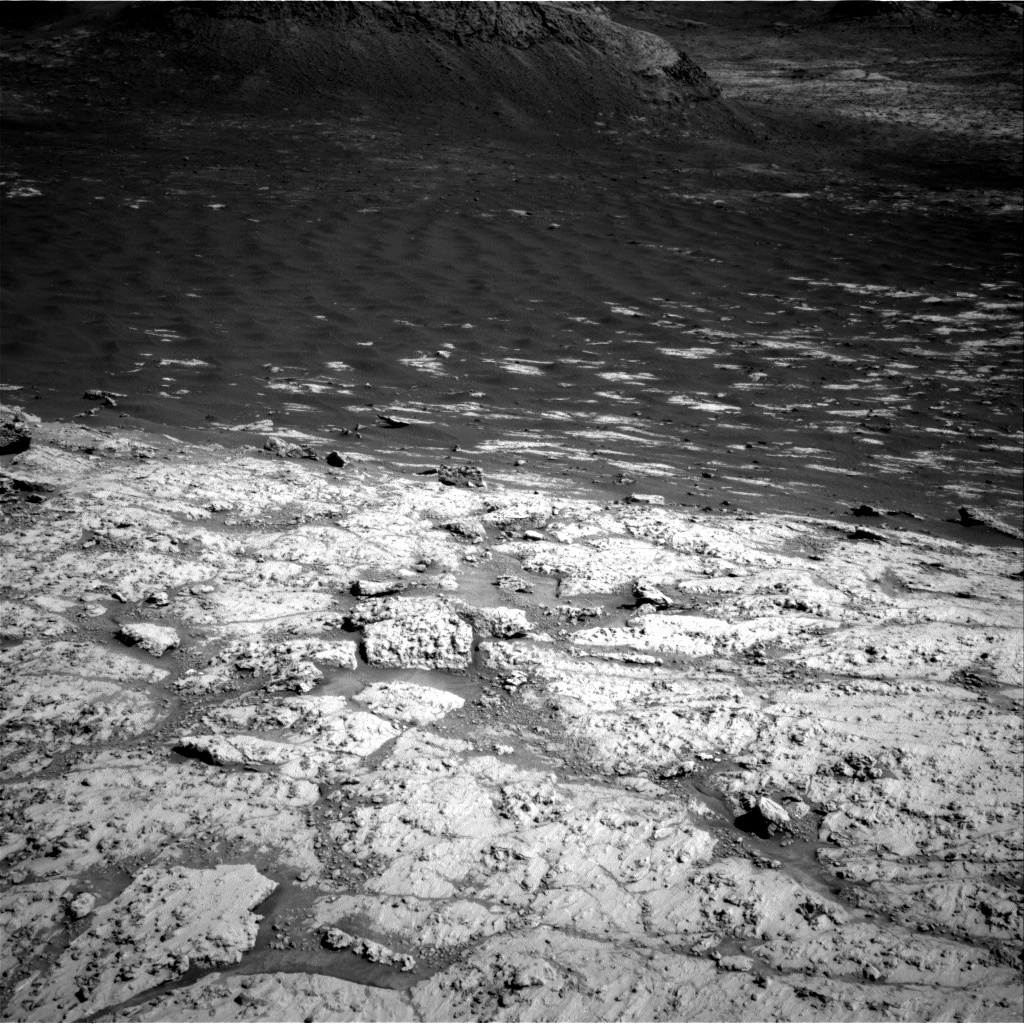June 18, 2021
Sol 3153-3155: Not Driving off Into the Sunset
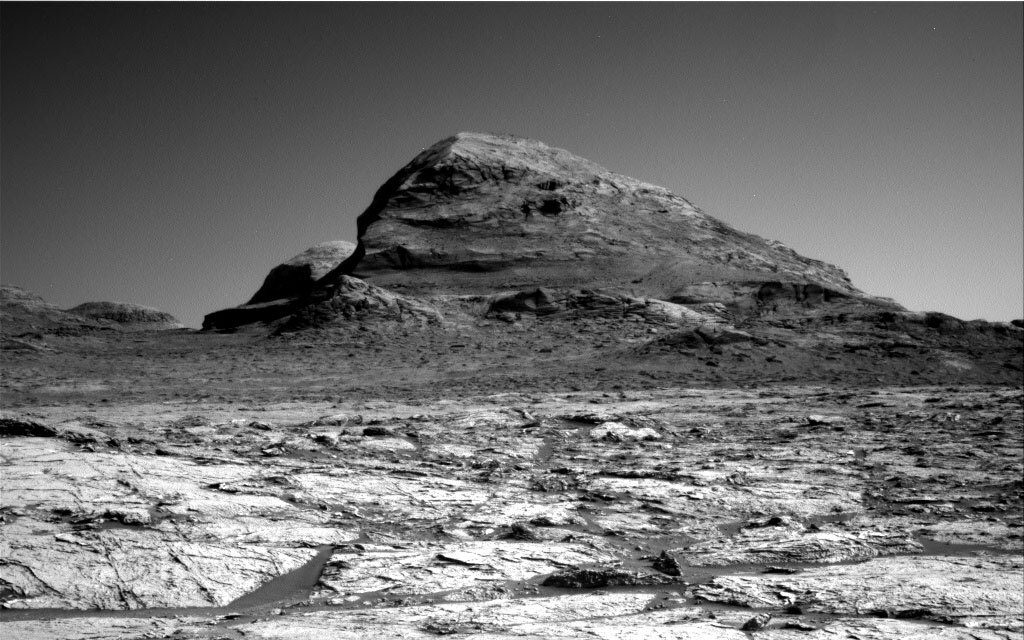
This image was taken by Right Navigation Camera onboard NASA's Mars rover Curiosity on Sol 3151. Credits: NASA/JPL-Caltech. Download image ›
In today’s 3-sol plan, we are doing a lot of pre-drive targeted science and a long drive. Today, I am a Rover Planner and helped to plan this long drive, which was an interesting challenge.
At the start of today’s planning, we came in to discover that our previous drive had stopped short due to higher tilts than expected. As a result, we did not have good imaging underneath the rover, and could not deploy the arm for contact science. This allowed us to significantly expand our first-sol targeted science block to a hefty three hours. In that block we are doing a lot of ChemCam and Mastcam observations. With ChemCam, we are looking at two bedrock targets, named “Beaussac” and “Biennac,” along with a lot of long distance RMIs looking south toward the sulfate unit. Mastcam, in addition to documenting the ChemCam targets, is also taking a multi-spectral set of images of target “Bernifal,” a bluish rock, to help understand its locally distinctive color. Mastcam is also taking a full 360-degree view of the rover’s location to help document our traverse. Along with all the science on this first sol of the plan, we are doing one of our periodic engineering activities to collect thermal data, which helps us keep our models up-to-date.
On the second sol of the plan, we are driving about 54m paralleling our strategic route. We are stopping at that point, even though we have more time, to make sure we can do our systematic contact science observations (especially since we couldn’t do them today). We are on challenging terrain – it is climbing upward, which limits how far we can see into the distance. You can see the upward slopes ahead in the attached image of our drive direction, toward Rafael Navarro Mountain (named for a former member of MSL’s SAM team - see our press release. Today we can only see about 25m, so we are using guarded driving, which uses the rover’s onboard hazard detection, so that we can drive further. Guarded driving faces challenges on steep slopes because it has a harder time estimating how big hazards are and predicting where it will drive due to higher expected slip. In order to prevent early termination of the drive precluding contact science on Monday (as it did today), we are taking some extra images along the path to try to ensure we have images under us to support our safety assessments. Another challenge we face with guarded driving is that we are driving west. We have to be careful how late in the day we try to take our map images – if the sun is in the field of view of the Front Hazcams, the stereo processing can be confused and hide hazards from the rover. This means we need to drive earlier in the day when we are facing west – and definitely NOT drive off into the sunset.
On the last sol of the plan, we are doing some untargeted science, which consists of atmospheric/environmental observations. We have Navcam imaging to look for clouds, to look through the atmosphere (zenith and suprahorizon movies) and Mastcam solar tau and crater rim extinction images.

